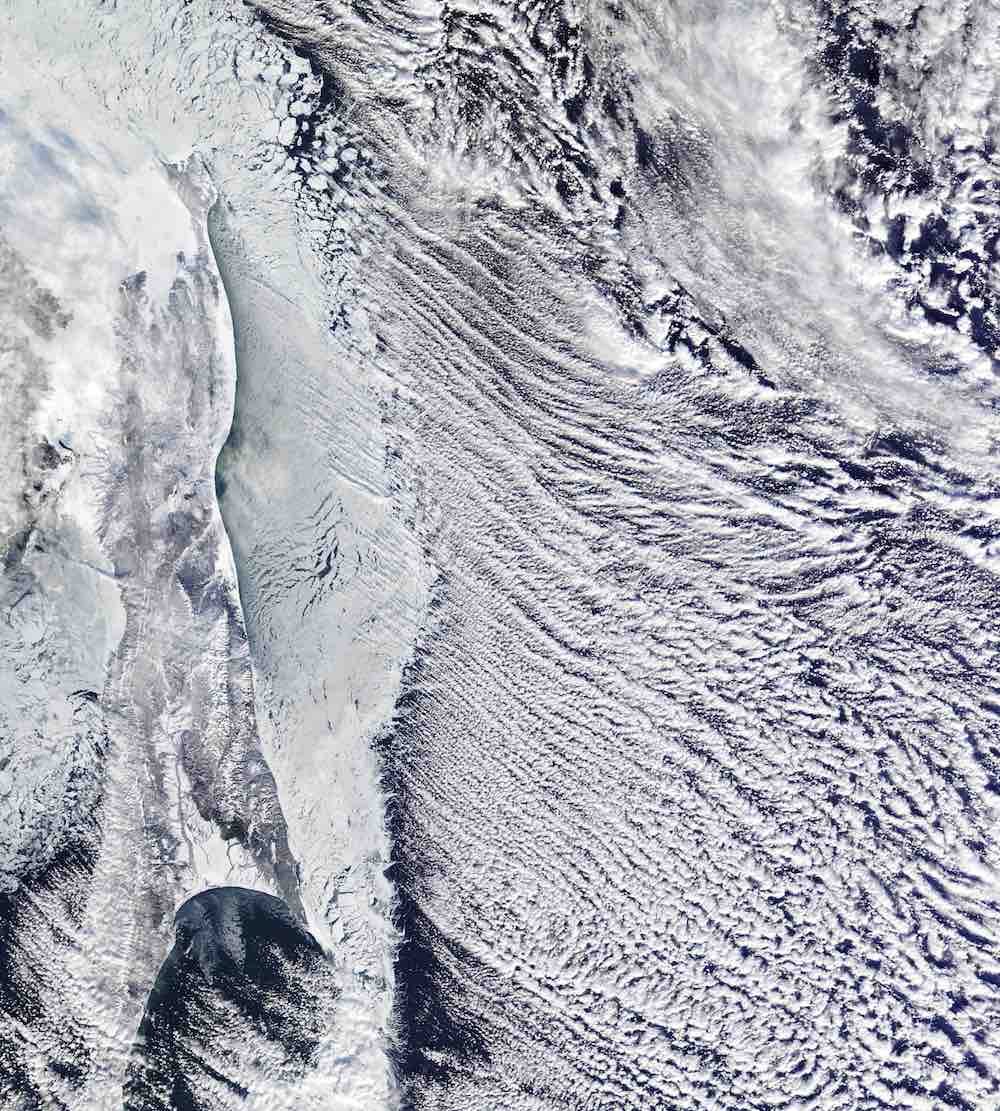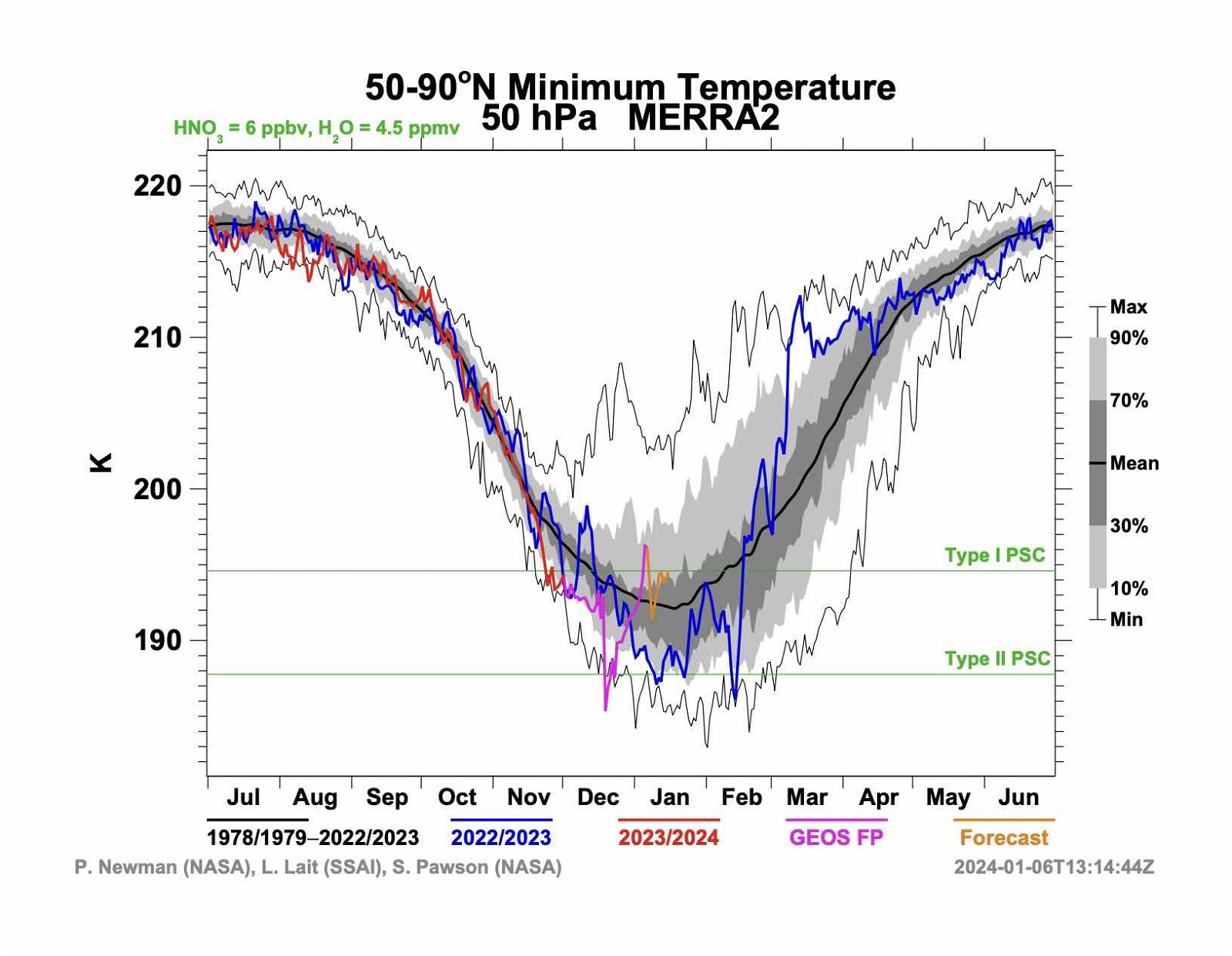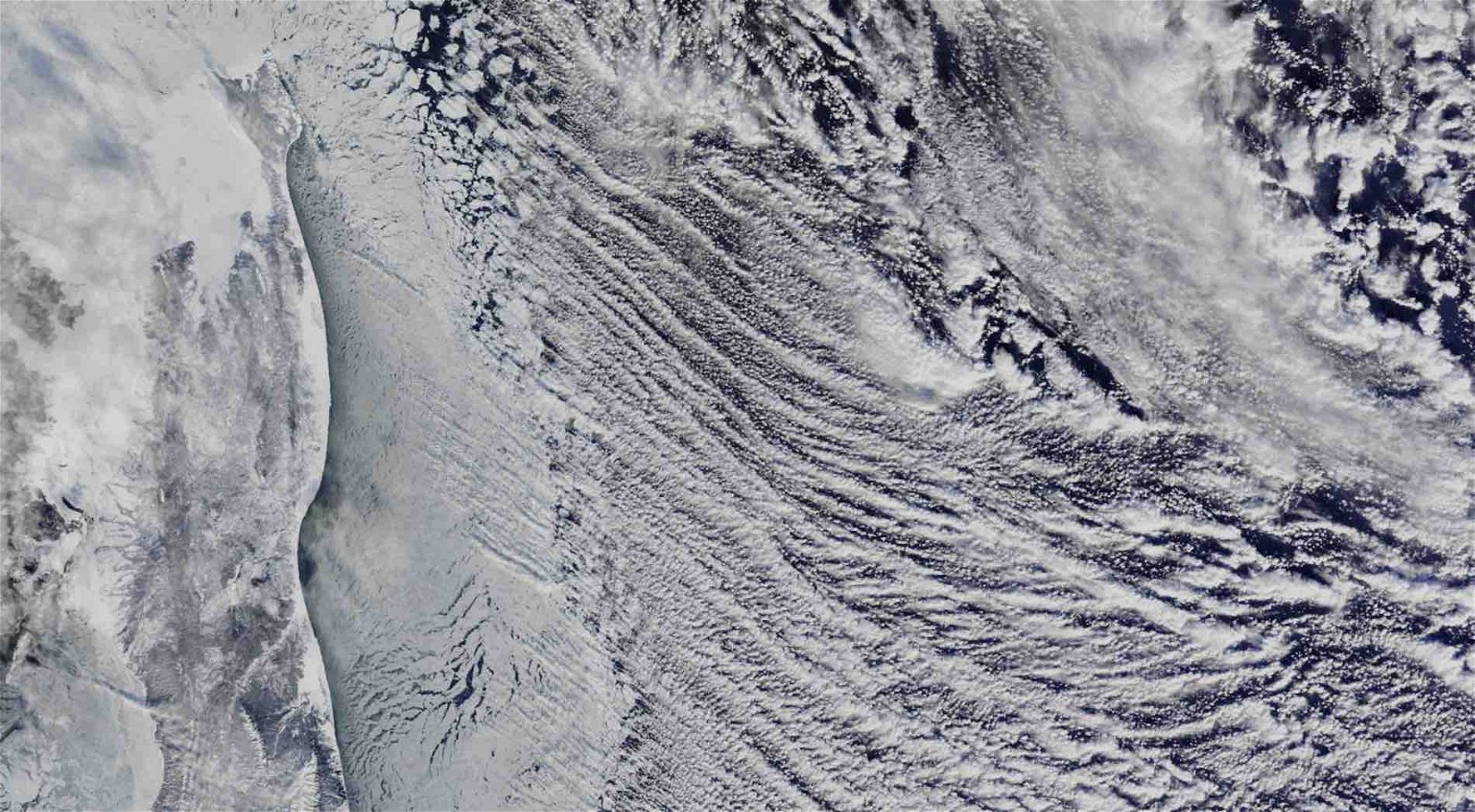NASA satellite images obtained late last year captured an odd-looking occurrence in the skies off the coast of eastern Russia, coinciding with an “anomalously low” temperature drop, the agency reported in a recent online posting.
Captured by the Moderate Resolution Imaging Spectroradiometer (MODIS) instrument on NASA’s Terra satellite, a series of odd parallel lines could be seen taking shape in cloud formations just east of Sakhalin Island, Russia’s largest island which separates the Sea of Okhotsk to its east and the Sea of Japan, which lays to the southwest.
Roughly the size of a school bus, the Terra satellite, launched in 1999, studies Earth’s climate through connections between the atmosphere and a range of planetary features that include land and sea. Equipped with five instruments capable of measuring different features of the Earth, Terra collects data that helps scientists gauge the impact of human activity on our planet, as well as how natural disasters impact human population centers and ecosystems.
Through the lens of its camera eye, the MODIS instrument visualizes every point on Earth every 1-2 days from its position in orbit, recording what it observes in 36 spectral bands, making it the most comprehensive of all the sensors on board the Terra satellite and tracking the largest array of our planet’s vital signs.
On December 28, 2023, Terra’s MODIS detected the odd formation of parallel lines of cumulus clouds over the Sea of Okhotsk. Striking in appearance, these unusual cloudy structures are a phenomenon well-known to atmospheric scientists.


Horizontal convective rolls, more commonly known as “cloud streets,” these odd-looking structures take shape in the troposphere as cool dry pockets of air make their way out over warm coastal waters, where they begin to acquire moisture rising from the sea. The resulting vapor condensation gives rise to cloud formation, whereas cooler portions of the surrounding air sink.
The atmosphere above Russia’s eastern coast is ideal for the formation of features like these, which generally appear in the same direction as the prevailing wind. Over the Sea of Okhotsk, the exceptionally cold northwest winds emerging from Siberia have been likened to a “factory” of ice and cloud formation, where temperatures on Sakhalin Island this time of year often plummet to as low as -6 degrees Fahrenheit (-21 degrees Celsius).
In the photos made available at NASA’s Earth Observatory page, Arctic stratospheric conditions were producing clouds featuring striking iridescent coloration.
“These ethereal polar stratospheric clouds develop in extremely cold conditions and were recently visible to observers at lower latitudes than usual,” wrote Lindsey Doermann in an entry on the Earth Observatory website describing the phenomenon in the NASA satellite images.


At the time the cloud streets appeared off the Russian coast, Arctic stratospheric temperatures had dropped extremely low (see above), according to data models produced by the space agency’s Global Modeling and Assimilation Office (GMAO).
Supporting NASA’s Earth Science mission, the GMAO provides modeling and data assimilation to help strengthen the information obtained from NASA satellite images, and to provide additional analysis and predictions about events occurring in the atmosphere, as well as on land and in the oceans.
Additional information about the formation of cloud streets can be found here, and further information about NASA’s Global Modeling and Assimilation Office can be found at the GMAO Research Site.
Micah Hanks is the Editor-in-Chief and Co-Founder of The Debrief. He can be reached by email at micah@thedebrief.org. Follow his work at micahhanks.com and on X: @MicahHanks.

